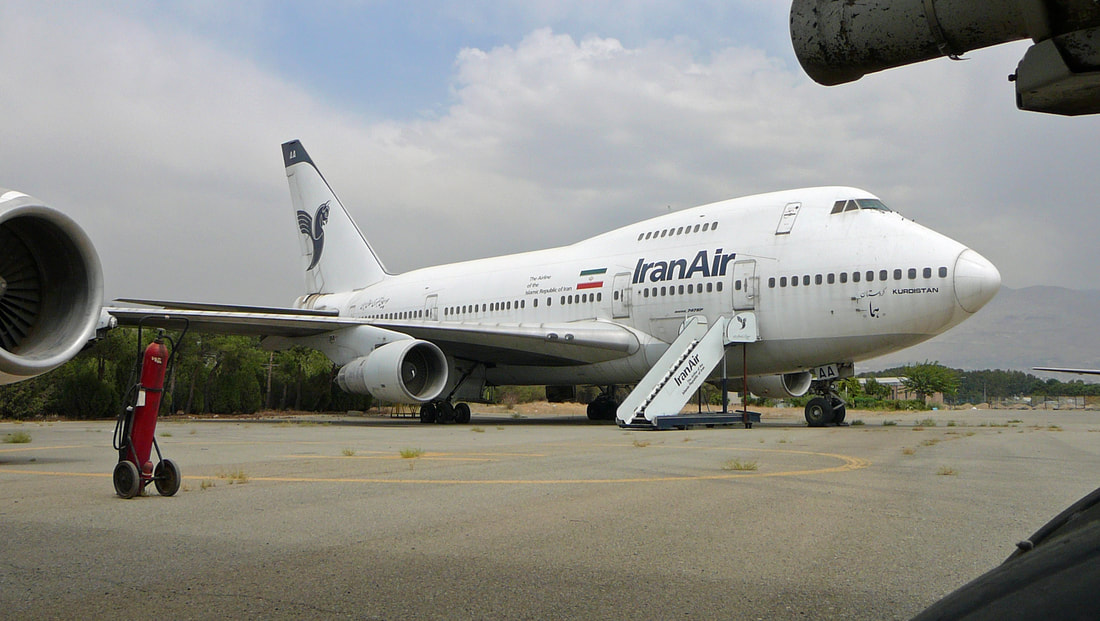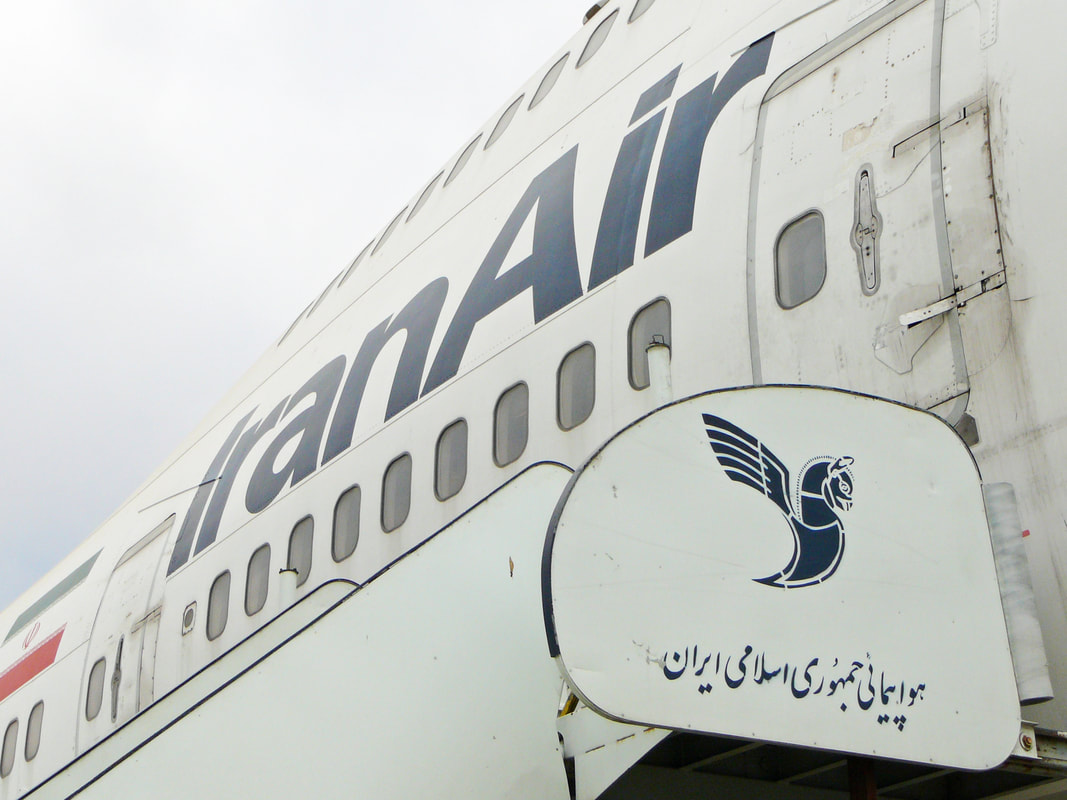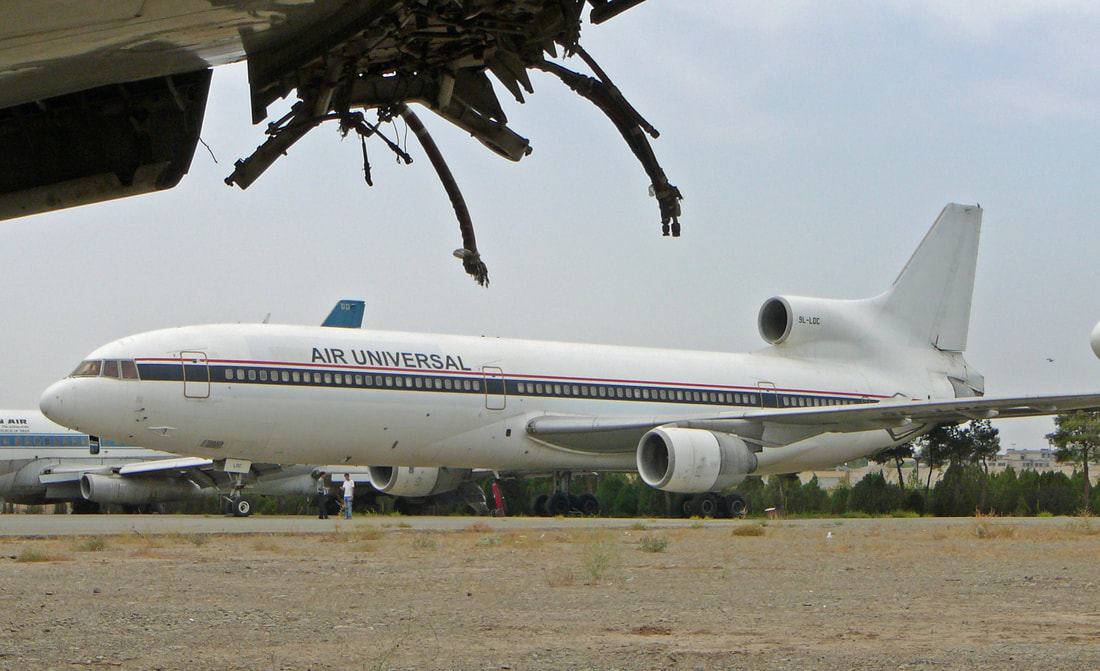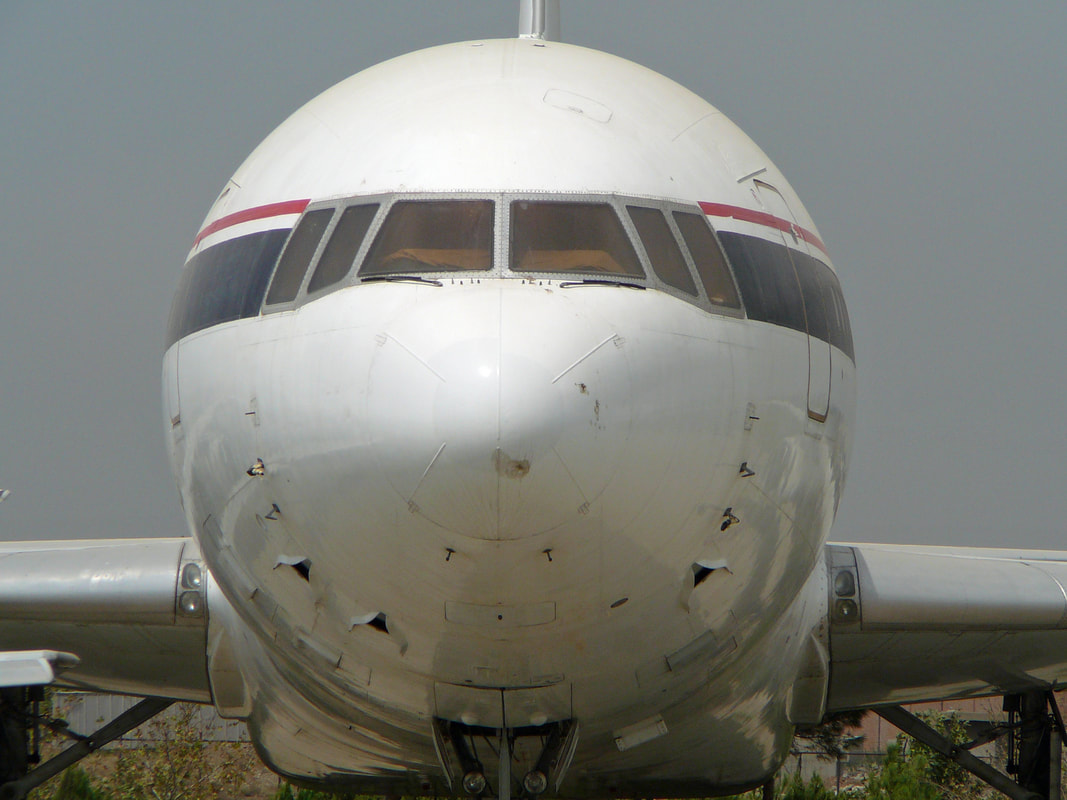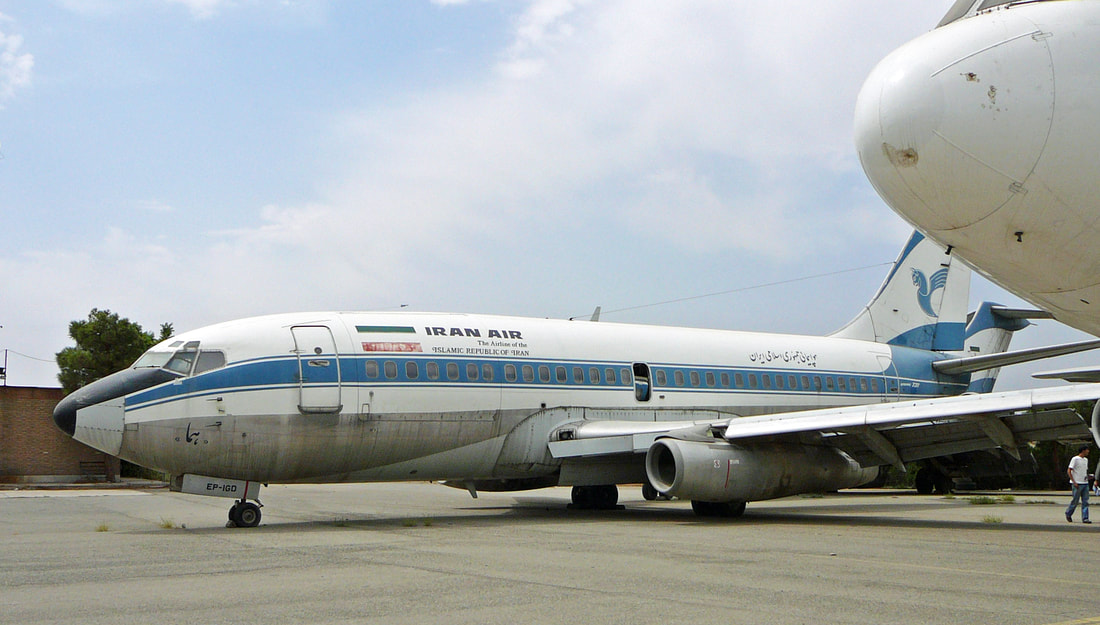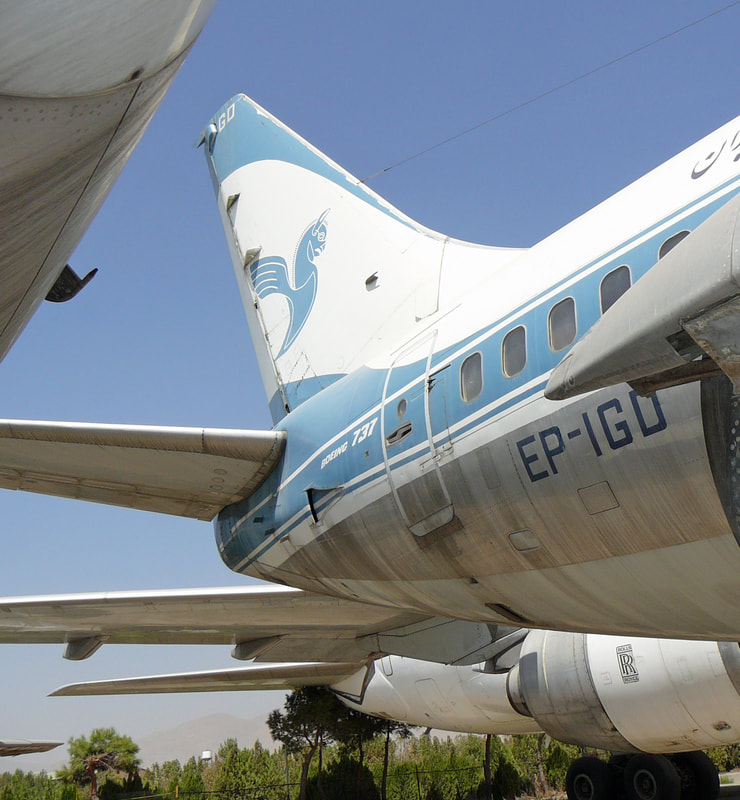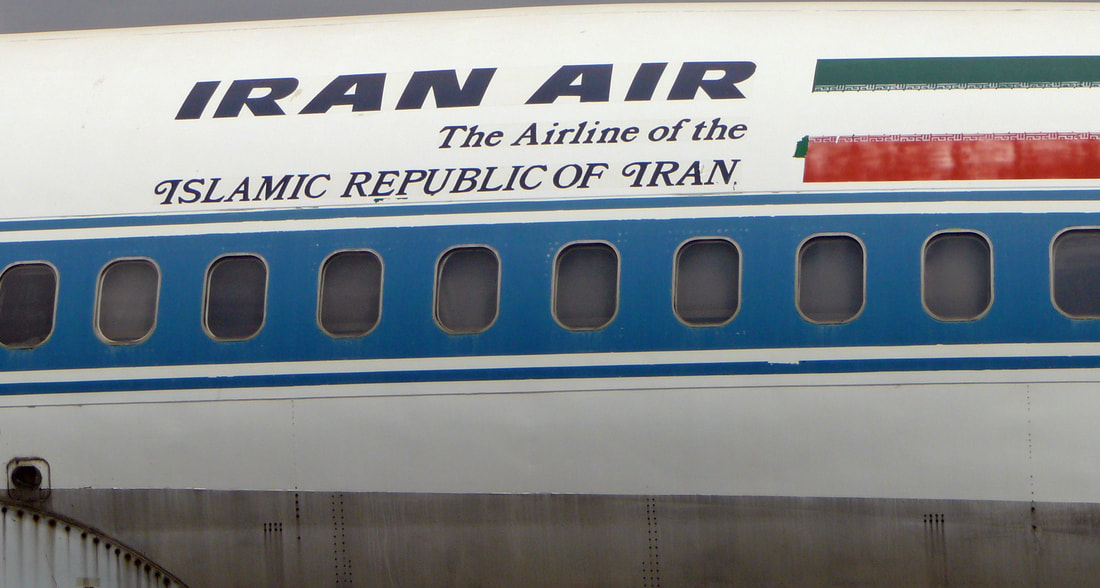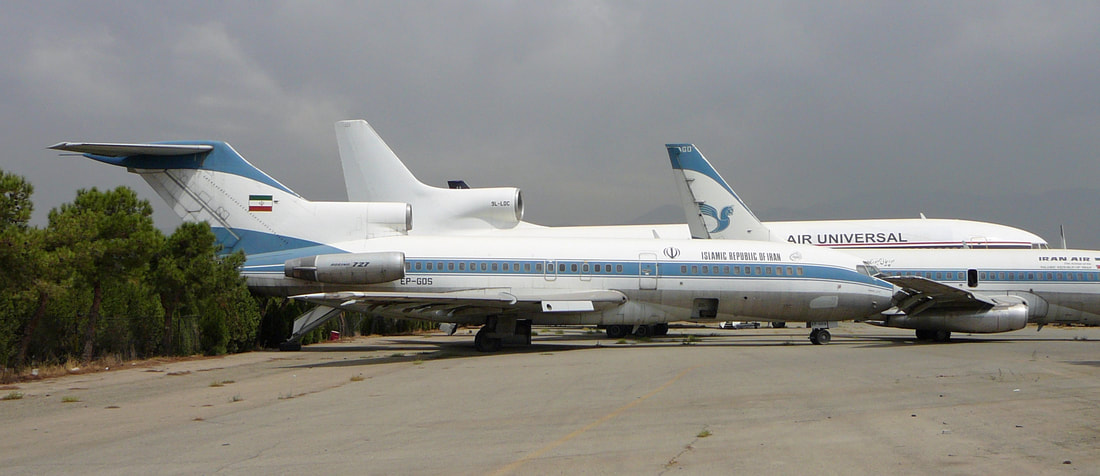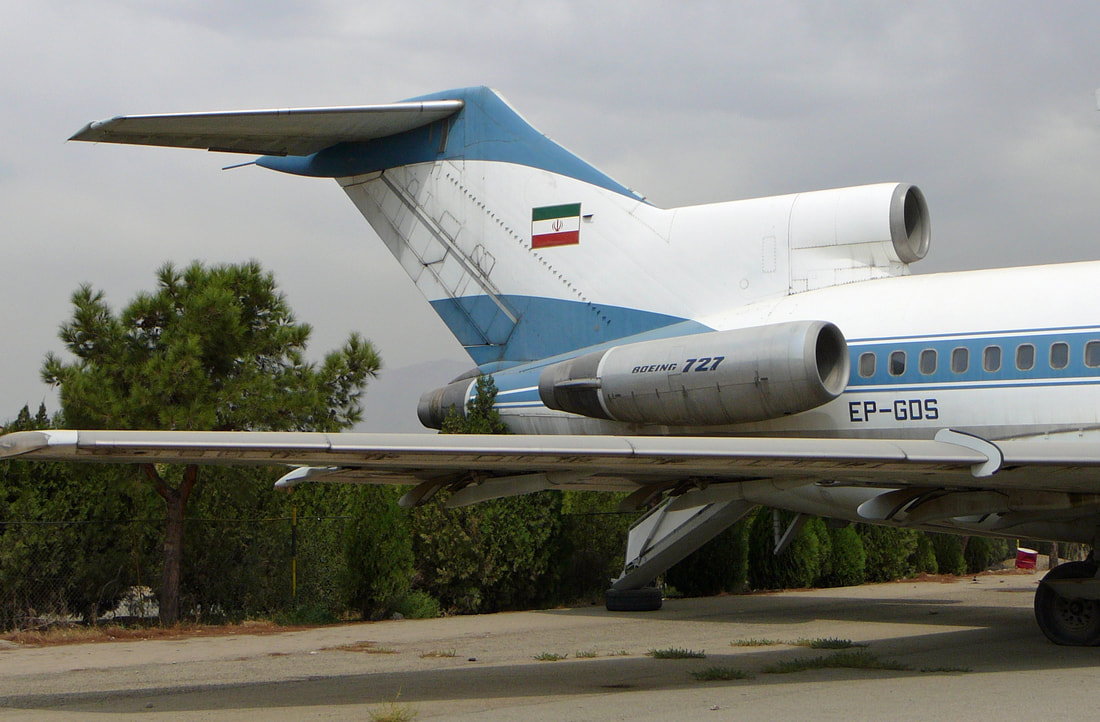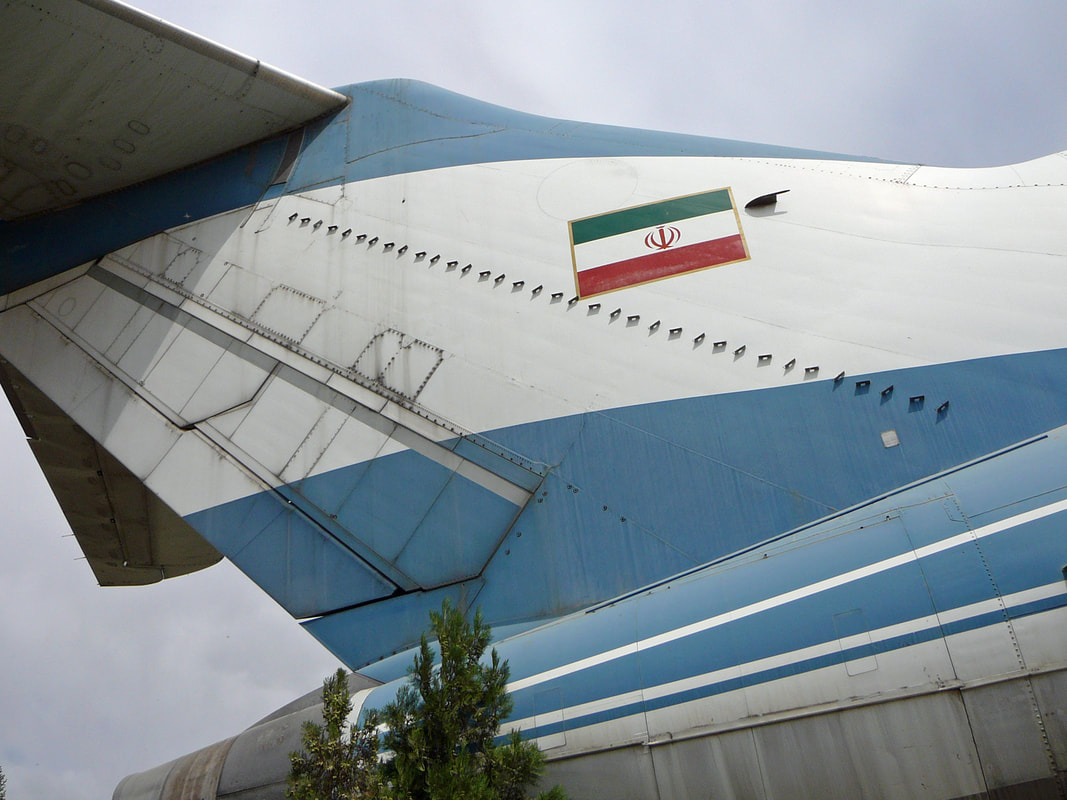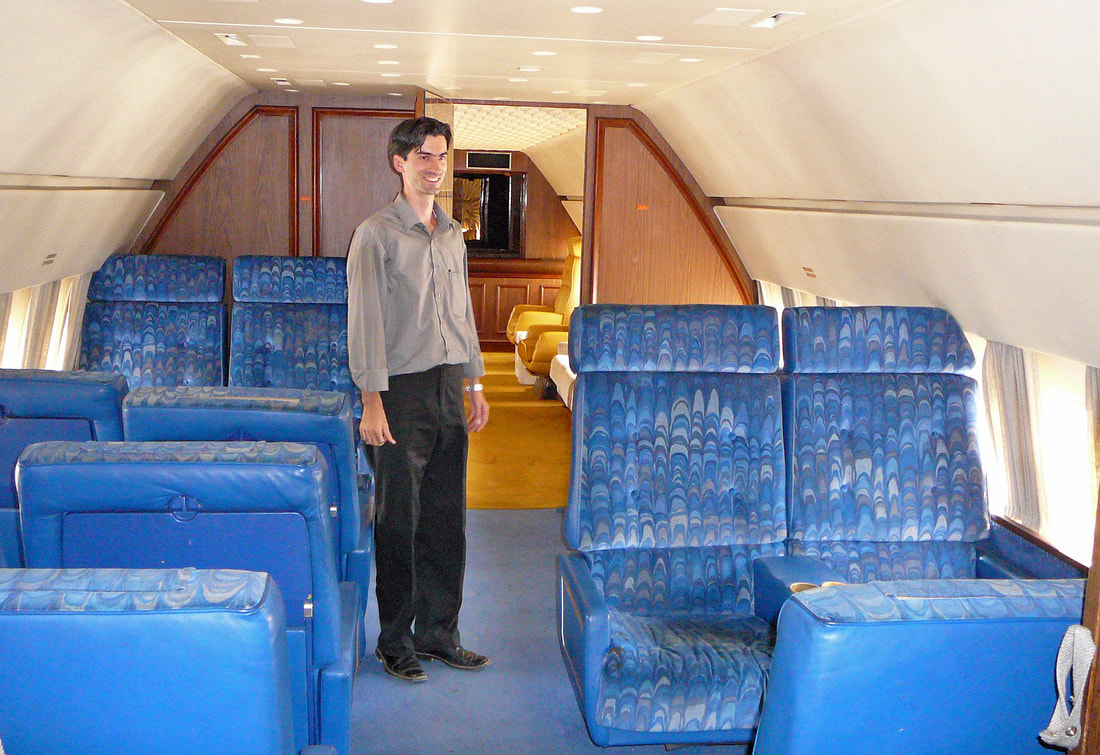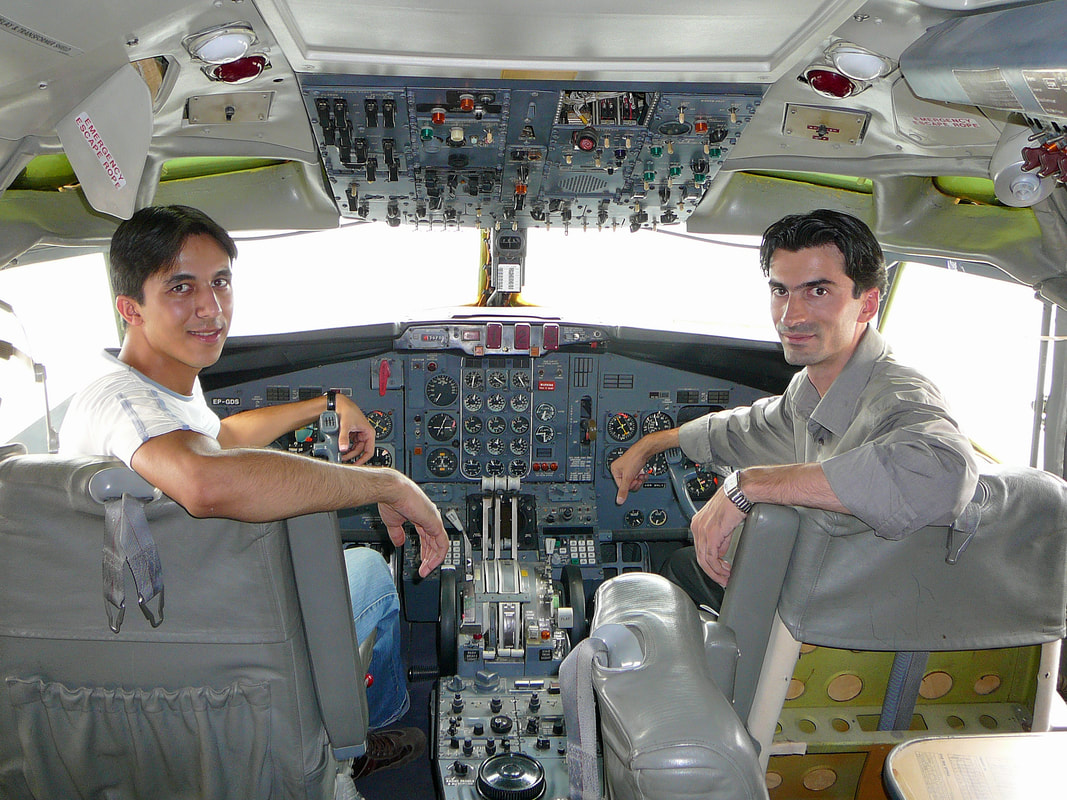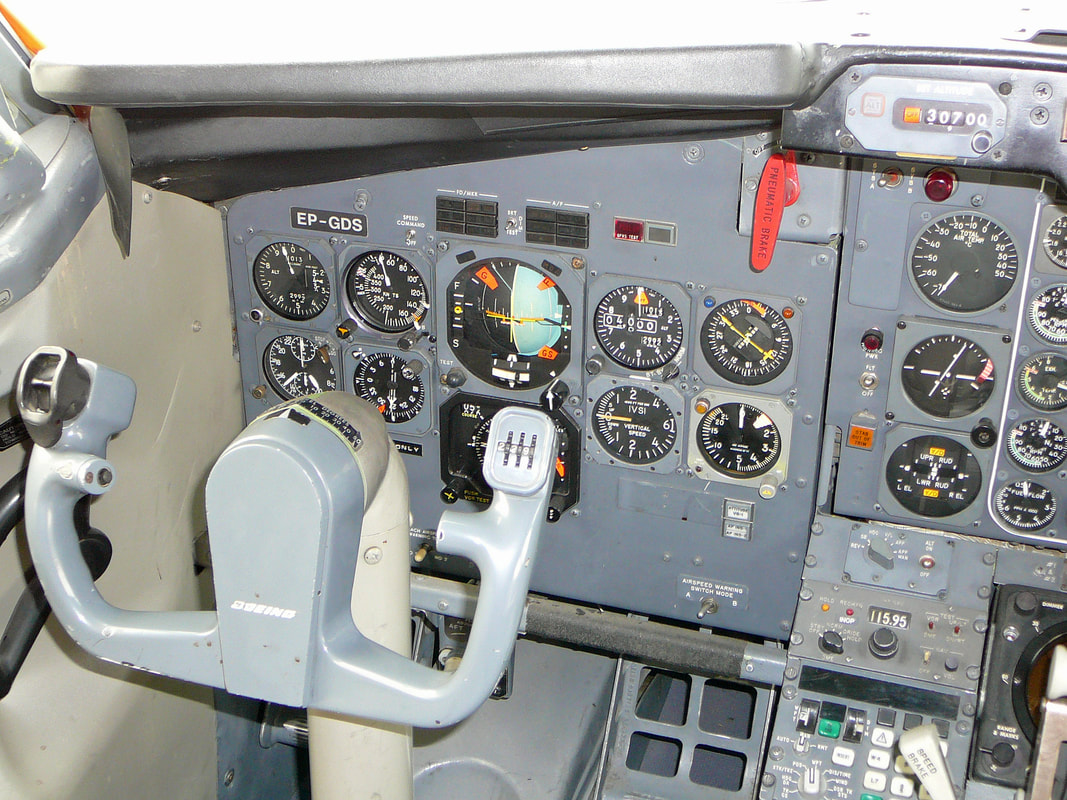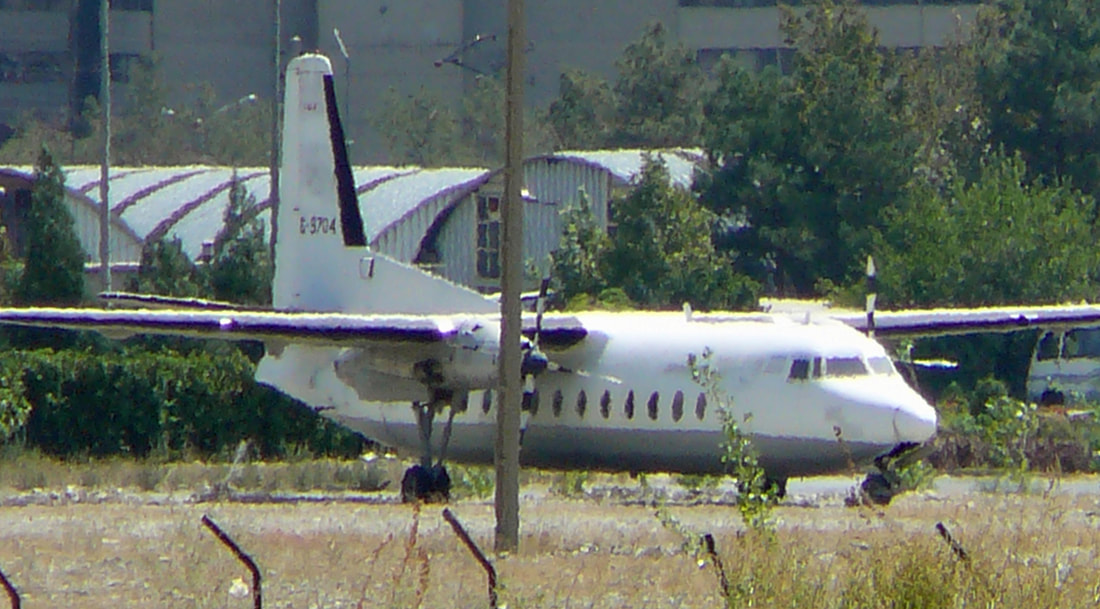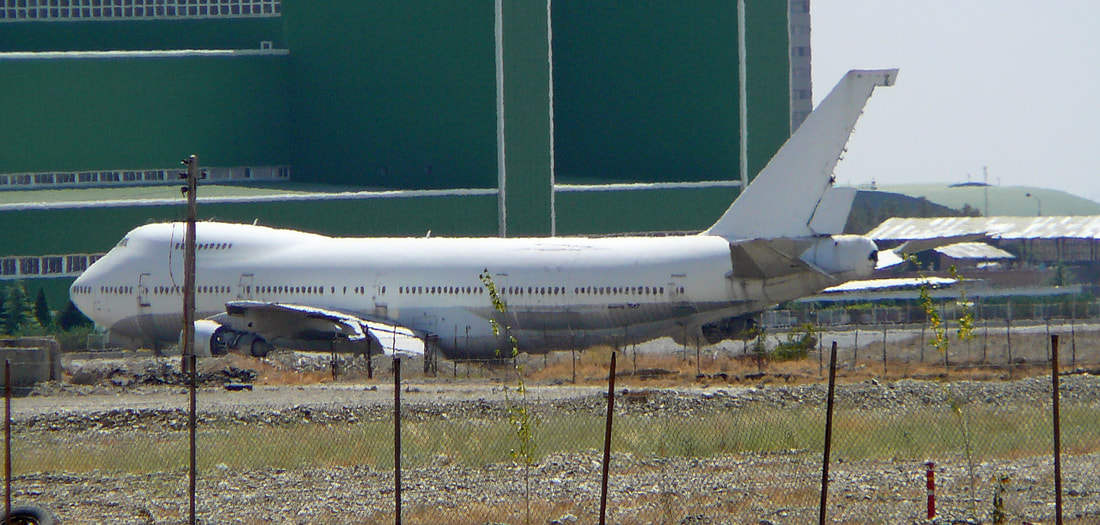Theran storage area - part 2.
In the summer of 2006, I traveled by KLM Royal Dutch Airlines Boeing 767-200, from Amsterdam to Tehran, to attend the first Air Events aviation tour to Iran. During my stay in Tehran, I took the opportunity to spend some time at Tehran's Aviation & Space Exhibition Center and the adjacent aircraft storage area.
Queen's of the Sky, sitting side-by-side on the ramp of Theran - Merabad airport in September 2006.
Time is running out for the last survivors of the jet revolution because of the present environmental standards on noise and exhaust emissions.
Boeing 747SP EP-IAA bereft of her number 1 engine.
After many years of faithful service with the Theran based airline her service life seemed over when she was stored at Merabad for most probably part-out & scrap. How wrong could I be!
EP-IAA is looking very grubby after several month of storage.
An airplane stored outside will be subject to streaking down the paintwork from dust and dirt deposits unless washed regularly.
Snagged this photo on in unseasonal Iranian August weather in 2006.
As in all pitot heads, whether they feed airspeed indicators or devices such as this, there is a heating element to prevent icing and this creates the discoloration on the shiny stainless steel tube that looks as if a blowtorch has been played over the surface. Those heaters are mighty powerful.
The awesome sight and sounds of these pioneer aircraft thrilled a new generation of passengers as turbine technology ushered in a golden era of globe-shrinking air travel.
The Huma bird sporting majestically on its ventral fin.
EP-IAA is a rather impressive Boeing 747 Special Perfomer.
Fortune smiled on the jet as she was brought out of storage in 2007 to operate again on Iran Air's world wide network. In 2014 she was again stored at Merabad.
We all knew it would happen sooner or later. Iran Air has kept their 747SP's in service for a long time but one-day she will be scrapped.
9L-LDC provided yeoman service for so many operators and is seen here stored at Merabad in 2006, still in her Delta Airlines uniform.
The classic lines of the Big Lockheed are so evident in this full frontal of Air Universal 9L-LDC.
RB211 - Big Fan, Big Engine, Big Problems, Bigger Success
Intended for use aboard the Lockheed Tristar airliner, the RB211 was designed to deliver much greater efficiency than older engines and make use of new lightweight composite materials, such as carbon fiber, to keep its weight down. However, problems with the development of such an innovative engine led its builders Rolls Royce into a crisis and receivership in 1971. Supported by a government nationalization, Rolls Royce redesigned and completed the RB211, which went on to become one of their most successful products, powering hundreds of airliners the world over.
Retaining the colors of previous owner Delta Airlines, the Tristar is in long-term storage at Theran - Mehrabad.
EP-IGD looked rather lackluster back in September 2006.
For the Boeing 737-200 aircraft, each Pratt & Whitney JT8D—9A engine is equipped with a clamshell—type (also called bucket—type) thrust reverser. A clamshell—type reverser uses two deflector doors, an upper and a lower door, installed on the aft end of the engine. When forward thrust is selected, those deflector doors are stowed and form the external cowling around the engine exhaust nozzle. When reverse thrust is selected, the deflector doors are moved aft and rotated to the position of about 30 degrees from the vertical in order to block and redirect the turbine exhaust gas flow. Exhaust gases are deflected forward and result in reverse thrust, which is directed rearward, instead of forward.
EP-IGD had faded paint and flat tires during my visit in September 2006.
Nose mounted air data probes festoon this Iran Air Boeing 737-200C.
Note; - The antenna cable (I'm assuming they are HF) can be seen between the leading edge of the tail connecting to the top of the fuselage of this Boeing 737-200.
Your author.
EP-IGD, ex-Monarch Airlines. Good ship. She hung on till the end and she will likely be scrapped with her sisters.
In the tailcone we see the APU outlet.
Dirt has gathered in all the panel lines showing most clearly around the nose and doors.
Iran Air, branded as The Airline of the Islamic Republic of Iran.
This Boeing made its first flight on April 25, 1967, before being delivered new to All Nippon Airways as JA8321. After faithful service for All Nippon the 727 found employment with the Ford Motor Company in the US. In June 1974 she was exported to Iran and found work for respectively; the Government of Iran, Iran Air Force, Iran Air, before returning working for the Government as EP-GDS.
Tail section of EP-GDS. This classic Boeing 727-81 was delivered to All Nippon Airways in May 1967 as JA8321.
The 727 is equipped with a retractable tail skid that is designed to protect the aircraft in the event of an over—rotation on takeoff.
The blue cheatline of Iran Air, emblazoned on the fuselages these Boeings, make them a distinctive sight as they stand side-by-side on the ramp on the North-Easteren side of Theran - Merabad International.
Once part of the prestigious All Nippon Airways fleet, the jet was bought by the Government of Iran in 1974 and converted into a flying palace.
Another innovation on the 727 was the auxiliary power unit (APU), which allowed electrical and air—conditioning systems to run independently of a ground—based power supply, and without having to start one of the main engines. An unusual design feature is that the APU is mounted in a hole in the keel beam web, in the main landing gear bay.
The 727 is one of the noisiest commercial jetliners, categorized as Stage 2 by the U.S. Noise Control Act of 1972, which mandated the gradual introduction of quieter Stage 3 aircraft. The 727's JT8D jet engines use older low-bypass turbofan technology, whereas Stage 3 aircraft utilize the more efficient and quieter high-bypass turbofan design. When the Stage 3 requirement was being proposed, Boeing engineers analyzed the possibility of incorporating quieter engines on the 727. They determined that the JT8D-200 engine could be used on the two side-mounted pylons, but the structural changes to fit the larger-diameter engine (49.2 inches (125 cm) fan diameter in the JT8D-200 compared to 39.9 inches (101 cm) in the JT8D-7) into the fuselage at the number two engine location were prohibitive.
The reverse thrust system on the 727 JT8D's uses clamshell—type doors on each engine to deflect exhaust gases in a forward direction. The 727's reverse thrust system is not designed to be used in flight. It can be used to back the aircraft, but great caution should be used at speeds of less than 70 knots because of possible exhaust gas ingestion and engine damage.
Close-up of the vertical stabilizer of the 727. The small vanes are vortex generators, which delay airflow separation and improve the effectiveness of the stabilizer and rudder.
The 727 is equipped with a retractable tail skid that is designed to protect the aircraft in the event of an over—rotation on takeoff.
While the Shah and his family lived in the lap of luxury he literally allowed his own people to die.
Luxury from the 70's.
Switches and controls, worn smooth by the touch of a thousand hands.
Shahram Sharifi and friend at the helm of Boeing 727-81 EP-GDS.
This is high level of ‘jetocide’.
Decidedly static Boeing 727-86C EP-IRC.
The perfectly circular cross-section of the Boeing 727 fuselage is clearly evident in this view of this Iran Air 727 at Theran, Merabad in 2006.
EP-IRC is seen here resting under a gorgeous sunshine in Theran - Merabad.
Boeing 727-86 EP-IRC was operated by Iran Air for more than 30 years before being withdrawn from use.
Sad to see her this way!
The Boeing 727-100 middle engine (engine 2) at the very rear of the fuselage gets air from an inlet ahead of the vertical fin through an S—shaped duct. This S-duct proved to be troublesome in that flow distortion in the duct induced a surge in the centerline engine on the take—off of the first flight of the 727-100. This was fixed by the addition of several large vortex generators in the inside of the first bend of the duct.
Iran Air, branded as The Airline of the Islamic Republic of Iran, Boeing 727-86C, with the Huma bird sporting majestically on its ventral fin, seen here in storage at Tehran, Mehrabad airport.
What do we see in front of us? - From left to right; 5-2602 F-27, 5-8817 F-27, EC-EON Airbus A300B4, a F-27, 5-2082 Falcon 20, 5-2083 Falcon 20 and the wreck of what looks like a Fokker F-28 Fellowship.
Not much time left for this former Iberia A300B4 (EC-EON). Theran - Mehrabad, September 2006. During the following months she was scrapped.
Heat shimmers on a remote corner of Theran - Merabad Airport, as Fairchild Hiller FH-227 is resting under the intense Iranian sunshine in August 2006.
During the Persian Gulf War, most Iraqi pilots and aircraft fled to Iran to escape the bombing campaign because no other country would allow them sanctuary. The Iranians impounded most these aircraft after the war, including this supposedly anonymous Boeing 747-200, which in fact is the former Iraqi Airways Boeing 747-270C(M) YI-AGO.
Two Iran Air Force 747-100's awaiting maintenance with FARS Co.



